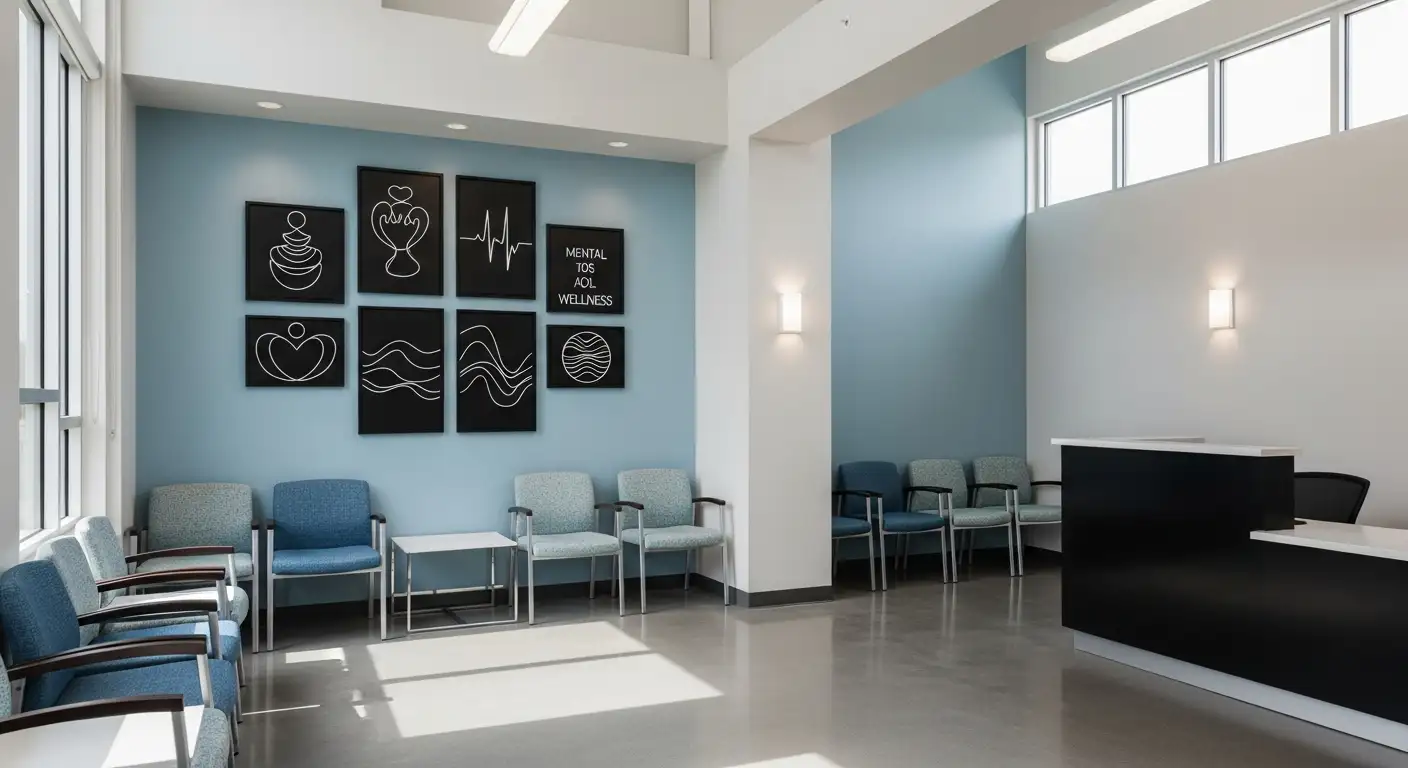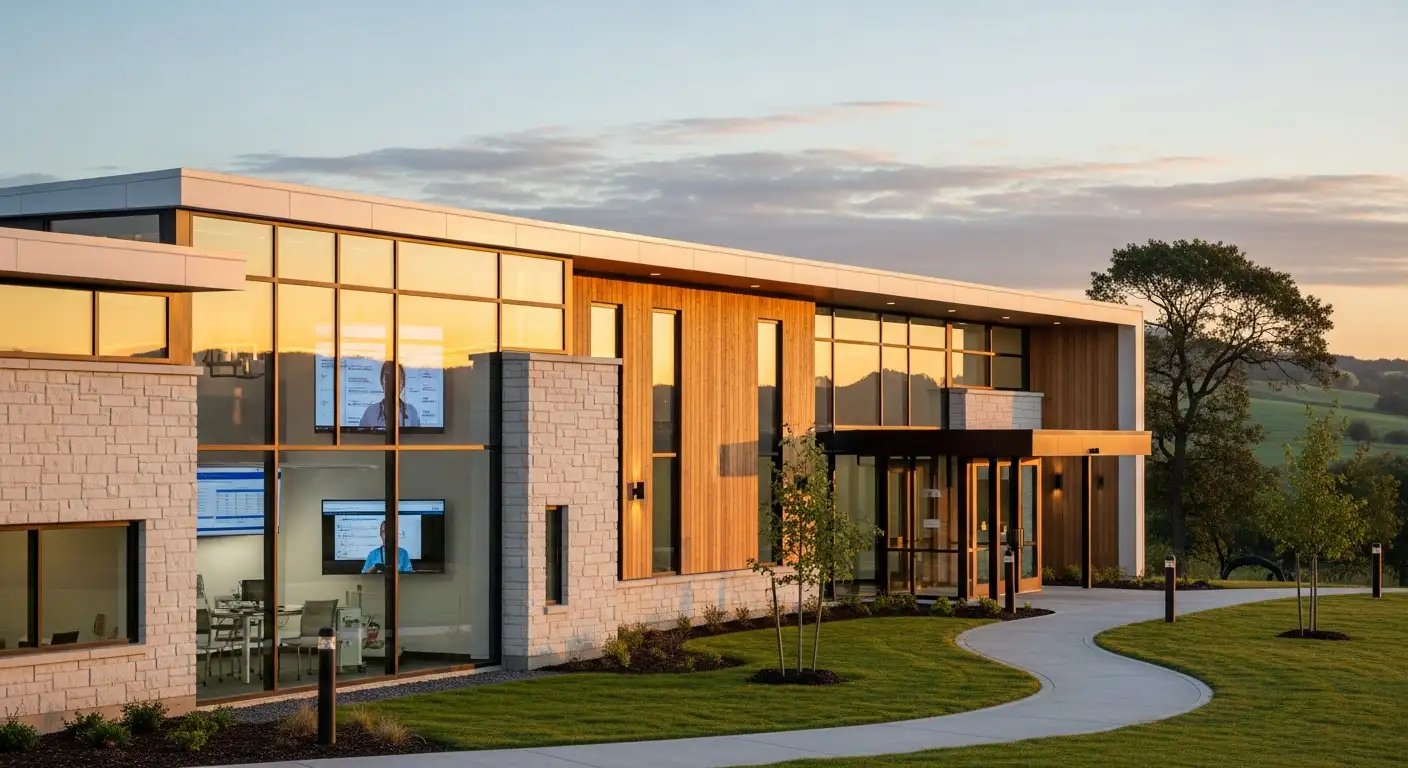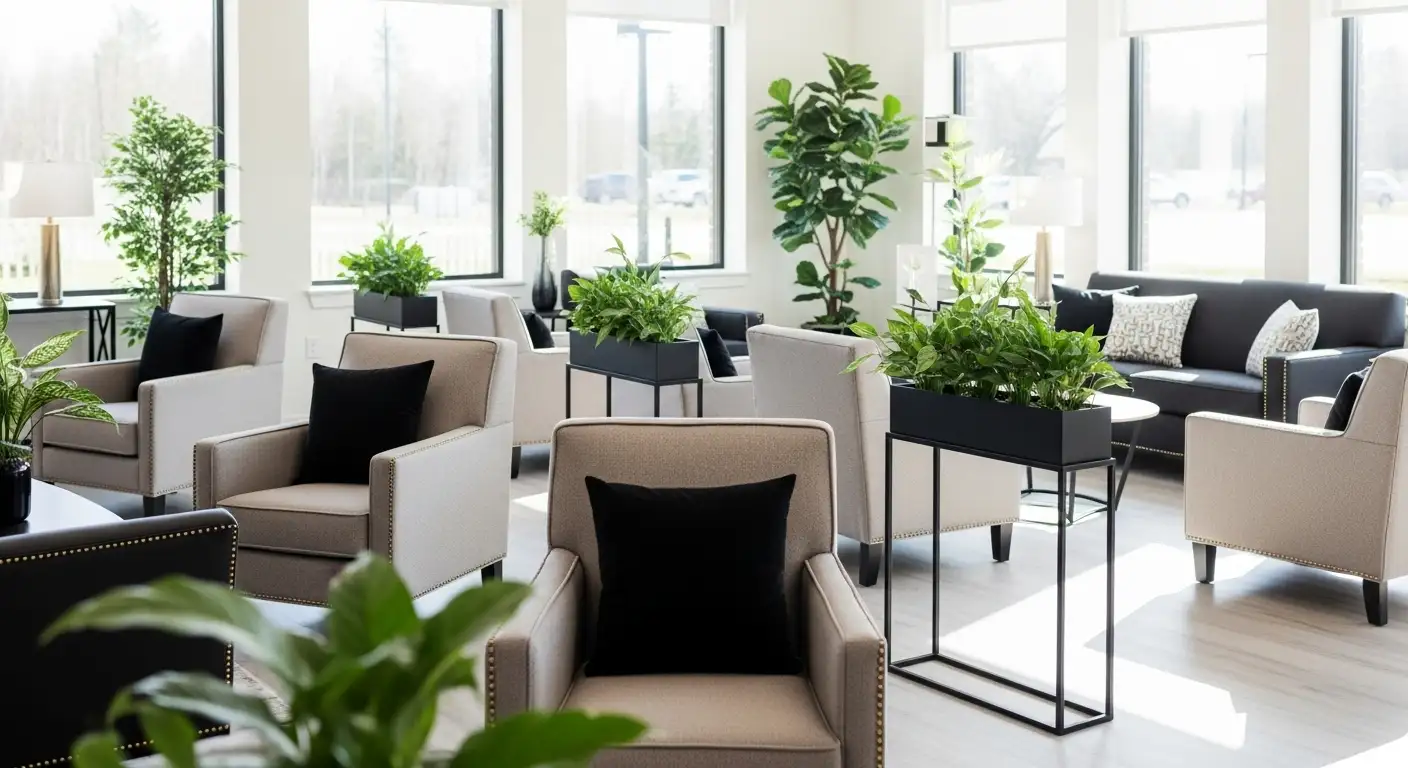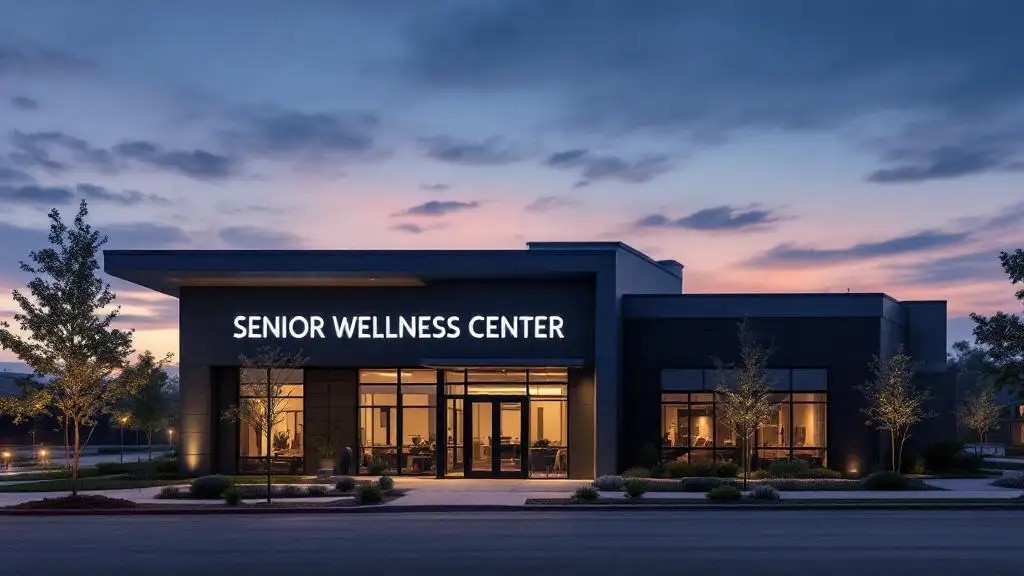Understanding Cultural Sensitivity in Elder Care Behavioral Health
Delivering effective behavioral health care to diverse elder populations requires a nuanced approach that respects cultural values, beliefs, and practices. This article explores comprehensive strategies to provide culturally sensitive treatment for substance abuse, mental health issues, and co-occurring disorders among aging adults. By integrating cultural competence into clinical practice, service providers can better engage elders from varied backgrounds and improve health outcomes.
The Importance of Cultural Competence in Behavioral Health Care for Elders
What is Cultural Competence in Behavioral Health Care?
Cultural competence in behavioral health care refers to the ability of providers and treatment programs to effectively understand, communicate with, and deliver care that is respectful of and responsive to the diverse cultural backgrounds of clients. This includes awareness of cultural beliefs, values, worldviews, family structures, and communication styles. For elder populations, cultural competence also means recognizing unique needs related to aging, including health challenges and social factors.
How Do Cultural Experiences Impact Treatment Outcomes?
Clients’ cultural experiences deeply influence their clinical journey in several ways:
- Treatment Settings: Preferences for individual vs. community-oriented care may vary based on cultural norms.
- Coping Styles: Many Native American and Asian cultures adopt holistic health perspectives, integrating mind, body, and spirit.
- Social Supports: Extended family systems and community networks often provide crucial support, shaping recovery paths.
- Communication: Oral traditions and nonverbal communication are important in many cultures and must be honored to ensure client engagement.
When care providers address these factors, treatment adherence and success rates improve. Conversely, overlooking cultural nuances can lead to misunderstandings, reduced trust, and poorer outcomes.
What Role Does Stigma Play in Mental Health and Substance Use Treatment Among Elders?
Stigma associated with mental health and substance use disorders varies among cultural groups, often influencing elders' willingness to seek help. For example:
- Some communities may view substance use as a moral failing rather than a health condition.
- Fear of shame or social exclusion can discourage treatment initiation.
- Cultural beliefs about aging may affect perceptions of mental health symptoms.
Understanding and addressing these stigmas through culturally sensitive outreach and education are vital to increasing service utilization among diverse elder populations.
In sum, culturally competent behavioral health care that respects elders' unique cultural and clinical needs leads to better engagement, reduces barriers, and promotes equitable mental health and substance use disorder treatment outcomes.
Understanding Cultural Differences: Worldviews and Communication Styles Among Elders
Holistic Perspectives in Native-American and Asian Cultures
Many Native-American and Asian cultures view health and well-being through a holistic lens. This means they consider the interconnectedness of the mind, body, spirit, and environment. Elders from these cultures often emphasize balance and harmony as essential components to recovery and wellness, integrating spiritual practices and traditional healing methods into their care.
Community Orientation and Extended Family Systems
Elder individuals from these cultural backgrounds typically come from community-oriented societies. Extended family systems play a vital role in daily life and decision-making. Family involvement is not only a support system but also a critical element of treatment adherence and emotional resilience. Including family members in treatment planning often aligns with these elders’ cultural expectations and improves clinical outcomes.
Oral Traditions and Nonverbal Communication
Communication styles also vary greatly among elders from diverse cultures. Many Native-American and Asian elders rely heavily on oral traditions, where storytelling and verbal expression are primary means of sharing knowledge and experiences. Nonverbal cues, such as gestures, silence, and eye contact, carry significant meaning and must be understood within cultural context. Clinicians should be sensitive to these communication styles and adapt their approaches accordingly to build trust and foster effective dialogue.
Avoiding Stereotypes: Individualizing Treatment Within Cultural Contexts
Recognizing Intragroup Variation
Culturally competent treatment requires acknowledging that individuals within any cultural group are not monolithic. Diverse experiences, beliefs, and values exist even among people sharing the same cultural background. Clinicians must recognize this intragroup variation to avoid making broad assumptions that could hinder effective care or damage therapeutic relationships.
Understanding the Complex Relationship Between Culture, Values, and Individual Needs
Culture shapes many aspects of a person’s worldview, communication styles, family expectations, and coping strategies. However, individuals interpret and integrate these cultural elements uniquely. This complex interaction means clinicians should engage in open, empathetic dialogue to understand each client’s personal values and needs rather than presuming based solely on cultural identity.
Tailoring Treatment Without Assumptions
To individualize treatment without falling into stereotypes, providers should gather comprehensive, culturally informed assessments. This includes exploring spirituality, family dynamics, and preferred communication methods. Treatment plans should be flexible, allowing incorporation of cultural practices meaningful to the client. Emphasizing client input and avoiding preconceptions promotes respect, enhances engagement, and improves clinical outcomes.
Individualizing treatment by balancing cultural awareness with recognition of personal differences is essential for effective, respectful, and responsive care in diverse populations.
Special Considerations for Elder Populations in Behavioral Health Care

What unique clinical needs do elder populations present in behavioral health care?
Older adults often experience a higher prevalence of co-occurring health issues alongside mental health or substance use disorders. These overlapping medical and behavioral conditions require comprehensive and integrated treatment plans tailored to their complex needs.
What barriers affect older adults in accessing behavioral health services?
Transportation challenges and limited social support networks pose significant barriers to older adults receiving consistent and effective care. Physical mobility issues, lack of public transit, and social isolation can restrict their ability to attend appointments and engage in treatment.
How important is family involvement in the treatment of older adults?
Family involvement plays a critical role in supporting elders’ recovery and treatment adherence. Engaging family members can help provide emotional support, assist with care coordination, and bridge cultural or generational communication gaps, enhancing the overall effectiveness of interventions.
Collectively, addressing these factors through culturally sensitive, individualized treatment approaches improves engagement and outcomes for older adults facing behavioral health challenges.
Comprehensive Treatment Options for Substance Abuse in Elder Communities
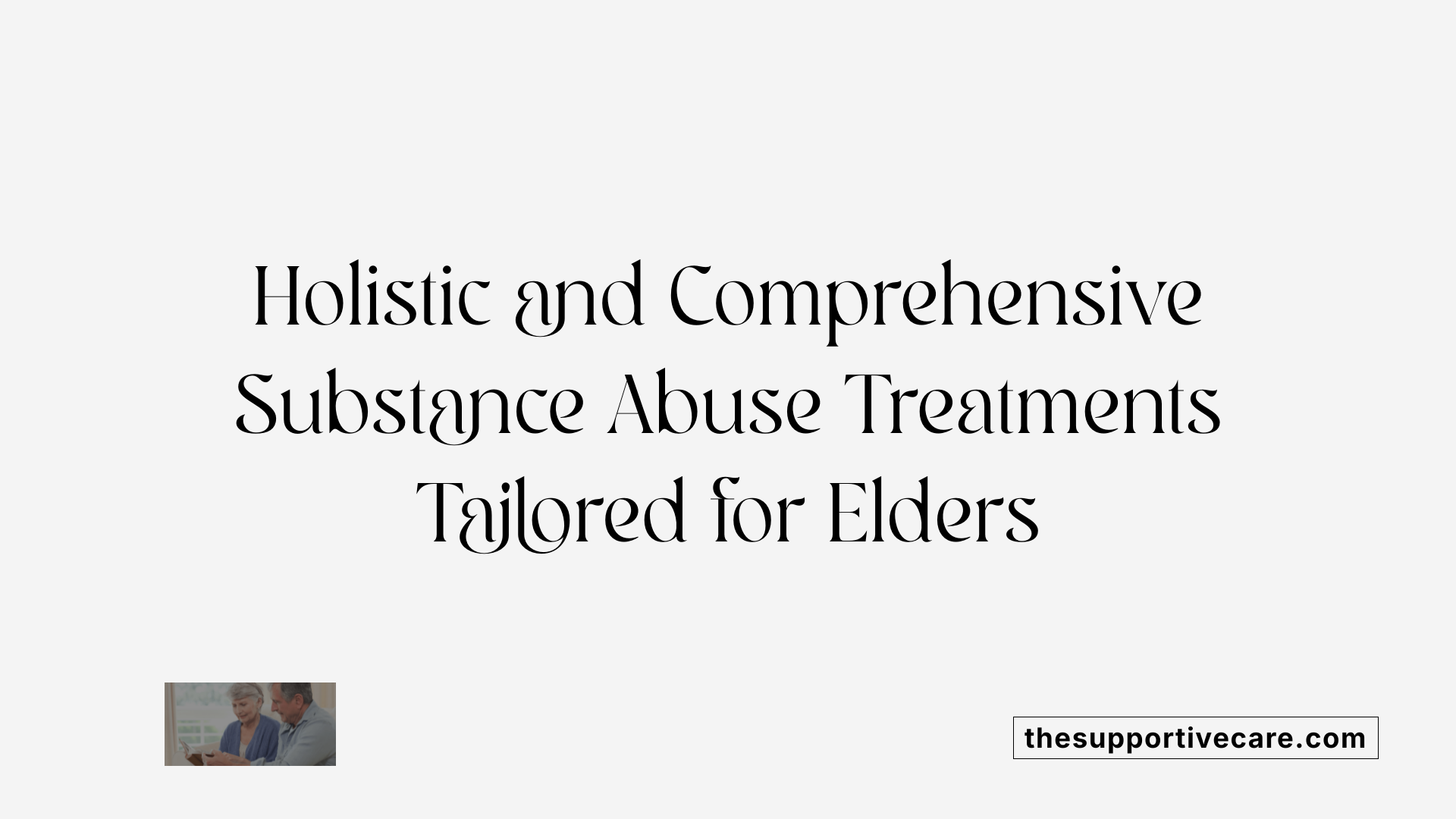
What are the comprehensive treatment options available for substance abuse?
Comprehensive substance abuse treatment for elders combines several approaches to address the complexity of addiction within this population. Detoxification is often the first step, safely managing withdrawal symptoms under medical supervision to prepare clients for further care.
Behavioral therapies are central to treatment. Cognitive-behavioral therapy (CBT) helps elders recognize and change patterns of substance use by developing coping strategies. Motivational interviewing encourages readiness for change by resolving ambivalence and enhancing motivation. Contingency management may also be used to reinforce positive behaviors.
Medication-assisted treatment (MAT) plays a vital role, especially for opioid use disorder. Medications such as methadone, buprenorphine, and naltrexone are prescribed alongside counseling to improve outcomes and reduce relapse.
Support groups provide peer encouragement and help maintain sobriety. Programs like 12-step facilitation are well-established, offering community connection and accountability.
Rehabilitation options include both inpatient and outpatient programs designed to meet individual needs, considering cultural sensitivities, co-occurring health issues, and social support barriers common among older adults.
Primary care providers often conduct routine screenings and referrals to ensure timely intervention. Treatment plans that address the elder’s unique medical, cognitive, and social factors enhance the likelihood of successful recovery.
Ongoing recovery support, including family involvement, culturally appropriate services, and access to community resources, is essential for sustaining long-term wellness.
This multi-faceted, individualized approach ensures elders receive comprehensive care tailored to their unique challenges and strengths, fostering better health outcomes and improved quality of life.
Addressing Mental Health Issues Within Addiction Treatment for Elders

How are mental health issues addressed in addiction treatment programs?
Mental health concerns in addiction treatment for older adults are managed through integrated treatment models that treat both substance use and co-occurring mental illnesses simultaneously. Given that approximately 20% of older adults experience mental health or substance use conditions, a comprehensive approach is critical.
Assessment of co-occurring conditions typically occurs after achieving abstinence to accurately distinguish psychiatric symptoms from substance effects. This thorough evaluation helps tailor individualized treatment plans sensitive to elders' unique needs, including their cultural backgrounds and medical comorbidities.
Evidence-based therapies form the foundation of treatment. Cognitive-behavioral therapy (CBT), dialectical behavior therapy (DBT), motivational interviewing, and medication management are commonly employed. These modalities are often adapted for elders to address age-related cognitive and social factors.
Multidisciplinary teams play a pivotal role. Psychiatrists, psychologists, social workers, addiction counselors, and peer support specialists collaborate closely to coordinate care. This team-based approach ensures that treatment addresses mental health, substance use, physical health, and social support requirements comprehensively.
Family involvement and peer support are essential components. Engaging family members can alleviate barriers such as transportation and stigma, while peer-led groups provide mutual support and foster recovery. Programs that incorporate culturally appropriate practices further enhance engagement and outcomes among diverse elder populations.
Together, these strategies promote holistic care that respects older adults' cultural contexts and clinical complexities, improving both mental health and substance use outcomes in addiction treatment settings.
Effective Therapies for Addiction Tailored to Older Adults
What types of therapies are effective for various forms of addiction?
Behavioral therapies form the cornerstone of effective addiction treatment among older adults. Approaches such as cognitive-behavioral therapy (CBT), motivational interviewing, contingency management, and family therapy have been shown to help modify behavior, increase motivation, and develop healthier coping skills. These therapies are adaptable to the unique cultural and life experiences that influence older adults.
Medication-assisted treatment (MAT) is also essential, particularly for opioid use disorders. Medications like methadone, buprenorphine, and extended-release naltrexone reduce cravings and withdrawal symptoms. MAT is most effective when combined with behavioral therapies, offering a comprehensive strategy tailored to individual needs.
Holistic and alternative therapies complement traditional treatments by addressing physical, emotional, and spiritual well-being. Techniques such as art and music therapy, mindfulness meditation, yoga, and biofeedback help older adults manage stress, enhance emotional regulation, and foster recovery in culturally sensitive ways.
Importantly, many older adults face co-occurring mental health conditions. Integrating therapies like dialectical behavior therapy (DBT) and eye movement desensitization and reprocessing (EMDR) can effectively address these challenges, promoting greater recovery success.
In sum, effective addiction treatment for older adults is individualized, combining behavioral therapies, MAT, holistic approaches, and mental health care to support ongoing recovery and accommodate diverse cultural backgrounds.
Cultural Barriers and Program Assessment in Treatment Settings
Identifying Cultural Barriers Within Programs
Effective treatment requires recognizing cultural barriers that may hinder client engagement and recovery. These barriers include language differences, unfamiliar treatment approaches, stigma associated with substance use within certain cultures, and a lack of representation in program leadership or materials. Assessing programs for such barriers helps ensure services are accessible and respectful to diverse client populations.
Importance of Staff Cultural Competence Training
Training staff in cultural competence allows providers to better understand clients' cultural backgrounds, worldviews, and communication styles. This training reduces stereotyping and increases sensitivity to individual differences within cultural groups. It equips clinicians to tailor interventions that respect clients' values and improve therapeutic relationships.
Providing Materials in Clients’ Native Languages
Offering educational and treatment materials in clients' native languages addresses language barriers that can compromise comprehension and treatment adherence. Accessible materials enhance engagement and promote better understanding of recovery processes and available resources.
Incorporating Cultural Practices Into Treatment
Integrating culturally relevant practices—such as spirituality, community involvement, and traditional healing methods—supports holistic recovery approaches valued in many cultures. This inclusion honors clients’ identities and can improve treatment acceptance and outcomes.
By regularly evaluating and adapting programs to include these culturally responsive elements, treatment providers can create welcoming environments that effectively meet the unique needs of culturally diverse populations.
Resources and Training to Enhance Cultural Competence
TIPs and Relevant Publications
The Substance Abuse and Mental Health Services Administration (SAMHSA) provides numerous Treatment Improvement Protocols (TIPs) and publications that serve as foundational resources for clinicians striving to deliver culturally competent care. These documents offer evidence-based guidelines and practical strategies to address the unique needs of diverse populations, ensuring treatments foster respect for cultural differences and enhance client engagement.
Community Engagement Strategies
Effective cultural competence extends beyond clinical settings by involving community engagement. Programs tailored to specific cultural groups utilize outreach activities such as community-based depression management and suicide prevention, which exemplify how culturally relevant practices can be integrated into care delivery. By partnering with local organizations and leaders, treatment programs become more accessible and trusted within diverse elder populations.
Training Staff for Culturally Responsive Care
Staff training is critical to enhancing cultural competence in behavioral health services. Training modules focus on increasing awareness of cultural differences in worldview, communication styles, and family dynamics. Additionally, education on avoiding stereotyping and recognizing individual variation within cultural groups helps clinicians provide individualized, respectful care. Integrating cultural competence into routine professional development improves treatment outcomes for clients from diverse backgrounds.
Tools for Improving Substance Abuse and Mental Health Treatment Effectiveness
To improve treatment efficacy, programs assess organizational cultural barriers and adapt by offering materials in clients' preferred languages and incorporating cultural practices into therapy. Tools derived from TIPs and community feedback help identify these barriers. Furthermore, SAMHSA-supported initiatives provide helplines and crisis services, such as the 988 Suicide & Crisis Lifeline, which are vital in supporting culturally diverse clients during critical moments.
| Resource Type | Description | Example or Program |
|---|---|---|
| TIPs and Publications | Evidence-based guidance documents for culturally competent care | SAMHSA TIPs |
| Community Engagement | Outreach and culturally adapted activities promoting treatment accessibility | TeleConnect Suicide Prevention, Healthy IDEAS |
| Staff Training | Educational programs focused on cultural awareness, sensitivity, and individualized treatment | Cultural competence training modules |
| Treatment Tools | Language-appropriate materials, cultural adaptations in therapy, and crisis helplines | 988 Suicide & Crisis Lifeline, culturally adapted materials |
These resources and training initiatives collectively strengthen the ability of health professionals to meet the complex cultural needs of clients, ultimately enhancing the quality and effectiveness of substance abuse and mental health treatment.
Federal Initiatives Supporting Diverse and Elder Behavioral Health Care
What are the SAMHSA Hepatitis C Elimination Initiative and its focus?
The Substance Abuse and Mental Health Services Administration (SAMHSA) awarded $98 million for the Hepatitis C Elimination Initiative Pilot. This effort targets communities impacted by homelessness, addiction, and mental illness. The initiative exemplifies an integrated health approach, addressing Hepatitis C alongside behavioral health concerns in vulnerable populations.
How is funding supporting sober housing programs?
SAMHSA provided more than $45 million to bolster sober housing services for young adults. Recovery housing is vital for sustained addiction treatment, offering safe, supportive living environments that promote long-term recovery and reduce relapse rates.
What grants are available through the State and Tribal Opioid Response programs?
In fiscal year 2025, the U.S. Department of Health and Human Services, through SAMHSA, allocated over $1.5 billion in grant funding for the State Opioid Response and Tribal Opioid Response programs. These grants emphasize targeted support for addressing opioid addiction across diverse communities, including tribal populations.
How are behavioral health and substance use services being integrated?
States are advancing integrated behavioral health care by supporting reimbursement for co-occurring disorder treatment and enhancing Medicaid rates based on client complexity. Models like the Psychiatric Collaborative Care Model (CoCM) improve mental health outcomes within primary care. Programs such as Massachusetts’ Child Psychiatry Access Program offer psychiatric consultations for youth, enhancing access and coordination.
Overall, these federal initiatives and substantial funding allocations strengthen culturally competent services and improve accessibility of behavioral health care among diverse and elder populations, reflecting national priorities to address substance use disorders and mental health challenges comprehensively.
Epidemiology of Mental Health and Substance Use in Older Adults
What is the prevalence of mental health and substance use disorders among older adults?
Approximately 20% of older adults, equating to 5.6 to 8 million people in the United States, experience one or more mental health or substance use conditions. This growing population underscores the urgency for tailored treatment approaches that address their complex health needs.
Are there gender differences in disorder prevalence among older adults?
Yes. Mental health disorders tend to be more prevalent among older women, while substance misuse and abuse disorders are more common among older men. Recognizing these gender-specific trends is crucial for designing effective interventions that resonate with each group.
What disparities exist in treatment among racial and ethnic minority older adults?
There are significant disparities in mental health service utilization among racial and ethnic minority older adults. African American and Latino older adults often face lower rates of treatment initiation and adequacy compared to non-Latino Caucasians. Cultural beliefs and stigma play a major role in influencing help-seeking behaviors, highlighting the importance of culturally sensitive outreach and treatment programs to bridge these gaps.
Impact of Cultural Beliefs and Stigma on Help-Seeking Among Elders
How Does Stigma Vary Among Cultures in the Elder Population?
Cultural beliefs profoundly shape how older adults view mental health and substance use issues. Stigma attached to these conditions differs significantly across racial and ethnic groups. For example, some cultures may perceive mental health challenges as a personal weakness or family shame, leading to secrecy or denial. In many communities, the high value placed on self-reliance and family honor discourages elders from seeking help. These culturally specific interpretations contribute to complex barriers that vary widely between groups such as African Americans, Latinos, Asian Americans, and Native Americans.
How Does Stigma Affect Utilization of Mental Health Services?
Stigma greatly reduces the likelihood that older adults will seek or engage in mental health treatment. Research shows that African American and Latino elders use mental health services at lower rates than non-Latino Caucasians. Fear of discrimination, mistrust of healthcare providers, and internalized stigma result in delayed treatment or complete avoidance. These disparities contribute to poorer health outcomes and unaddressed co-occurring conditions in a population already vulnerable due to age-related challenges.
What Strategies Help Reduce Stigma and Encourage Treatment Seeking?
Addressing stigma requires culturally informed approaches that resonate with diverse elder communities. Effective strategies include:
- Offering culturally adapted programs like Healthy IDEAS, Un Nuevo Amanecer, and Beat the Blues that integrate culturally relevant content and community engagement.
- Involving families in treatment to respect traditional family structures and support systems.
- Training providers to understand cultural values, communication styles, and spiritual beliefs.
- Providing services in the preferred languages of clients and incorporating cultural practices into care.
- Using peer-led programs such as the SPRY initiative for LGBT older adults to enhance trust and relatability.
Together, these strategies help create a supportive environment that reduces stigma and improves mental health service utilization among culturally diverse elders.
Culturally Adapted Programs for Diverse Elder Communities

Healthy IDEAS for Latinos, Asians, and Immigrants
Healthy IDEAS is a culturally adapted program designed to address depression among elder populations within Latino, Asian, and immigrant communities. It integrates evidence-based approaches to depression management while respecting cultural values and practices. By focusing on culturally relevant outreach and intervention, the program helps overcome traditional stigma and barriers to mental health care.
Community-Based Depression Management and Suicide Prevention
Community engagement is central to culturally sensitive depression and suicide prevention efforts. Programs emphasize early identification and outreach through trusted community leaders and networks. TeleConnect is an example of a suicide prevention initiative that uses technology to reach elders in need, balancing cultural appropriateness with accessibility.
Un Nuevo Amanecer and Beat the Blues
These programs specifically target mental health and depression within Latino and African American elder populations. Un Nuevo Amanecer offers culturally tailored therapeutic activities and group support, fostering a sense of community and shared experience. Similarly, Beat the Blues provides community-centric interventions that align with cultural communication styles and family involvement to increase treatment efficacy.
Peer-Led Behavioral Health Services for LGBTQ Elders
LGBTQ older adults face higher rates of depression, suicidality, and substance use. Programs like Houston’s SPRY offer peer-led behavioral health services tailored to these unique challenges. Peer involvement provides culturally affirming support, creating safe spaces for recovery and mental health care that honor identity and lived experience.
These culturally adapted programs highlight the importance of individualized, respectful, and community-driven approaches to improve mental health and substance use treatment outcomes for diverse elder populations.
Addressing Unique Needs of Rural and LGBTQ Older Adults
What barriers do rural older adults face in behavioral health?
Rural older adults encounter significant challenges such as a shortage of mental health specialists, long travel distances to access care, and increased social isolation. These factors create obstacles in obtaining timely and effective behavioral health treatment.
How are innovative interventions helping rural elders?
To overcome these barriers, programs have implemented telephone counseling and internet-based treatments, improving accessibility and convenience. Community partnerships also play an important role, fostering local support networks that enhance outreach and service delivery.
What behavioral health disparities affect LGBTQ older adults?
LGBTQ elders experience higher rates of depression, suicidality, and substance use disorders compared to their non-LGBTQ peers. These disparities highlight the critical need for culturally sensitive and affirming care tailored to this group’s unique experiences.
What peer-led initiatives support LGBTQ older adults?
Initiatives like the SPRY program in Houston provide peer-led behavioral health services, offering support through shared experiences and culturally competent frameworks. Such peer-led models promote trust, engagement, and recovery among LGBTQ elders.
Together, these approaches emphasize culturally competent, accessible, and community-based behavioral health care, addressing the distinct needs of rural and LGBTQ older adults.
Prevention Strategies: Culturally Sensitive Approaches for Older Adult Communities
How effective are culturally sensitive prevention programs?
Culturally sensitive prevention programs have shown noteworthy success in reducing substance use among diverse adolescent populations, with an average treatment effect size of g = -0.20. This small to moderate effect indicates meaningful reductions across multiple substances such as alcohol, cigarettes, marijuana, and illicit drugs. These findings suggest that thoughtfully tailored prevention efforts can resonate well with target audiences and influence substance use behaviors effectively.
How do these programs apply to substance use prevention in minority populations?
Programs aimed at racial and ethnic minority groups—including Black, Hispanic, Native American, Asian American, Native Hawaiian, Pacific Islander, and multiracial adolescents—address unique cultural factors such as worldview, family structure, and communication styles. These approaches also acknowledge community orientation and stigma, which heavily influence help-seeking and recovery. By respecting these cultural nuances, prevention strategies become more relevant and impactful in these communities.
Why is ongoing research important to fill knowledge gaps?
Despite encouraging results, gaps in research remain, especially concerning Asian American, Pacific Islander, and multiracial youth populations. Enhanced understanding of cultural dynamics and substance use patterns in these groups is crucial to develop effective, culturally tailored interventions. Continued studies will enable refinement of programs to better serve the evolving demographic diversity, including the rapidly growing older adult population.
Overall, culturally sensitive prevention strategies play a vital role in substance use prevention for minority communities, including older adults, by integrating cultural values and social context to improve engagement and outcomes.
Integrated Behavioral Health Care Models for Elders
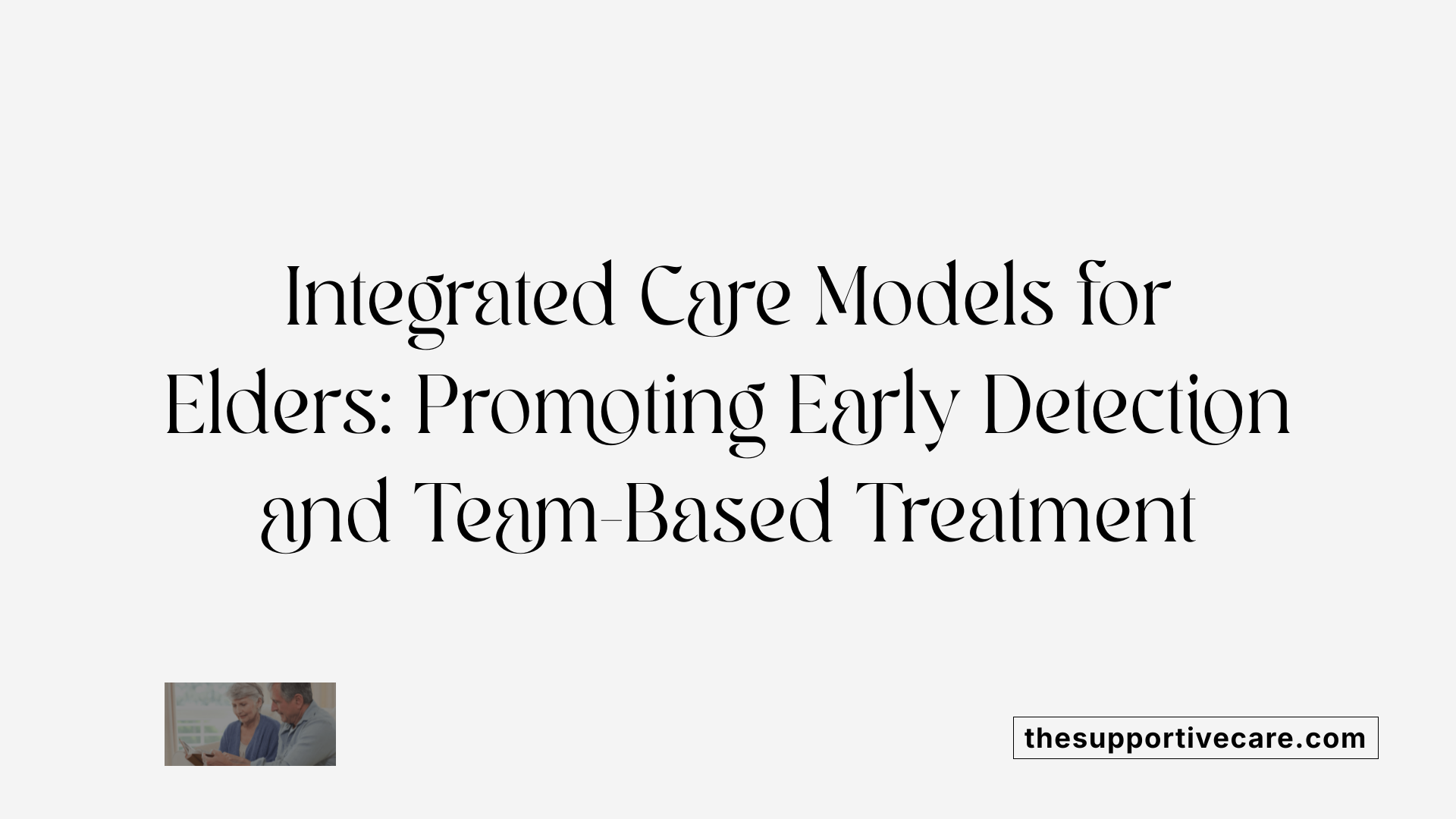
What role does routine screening and early identification play in elder behavioral health care?
Routine screening and early identification are foundational steps in integrated behavioral health care for elders. These practices allow for timely detection of mental health issues and substance use disorders, which may otherwise go unnoticed. By incorporating regular assessments during primary care visits, healthcare providers can connect elders to specialized services sooner, improving outcomes and reducing complications.
How does the Collaborative Care Model (CoCM) support behavioral health in elders?
The Collaborative Care Model (CoCM) is a proven approach to managing depression and anxiety within primary care settings, which has been embraced by various states. CoCM involves a multidisciplinary team including primary care providers, behavioral health specialists, and care managers who work together to provide coordinated, patient-centered care. This model ensures that elder patients receive comprehensive treatment addressing both mental and physical health needs, enhancing accessibility and effectiveness.
What state policies support reimbursement for co-occurring disorder treatments?
Several states have implemented policies to financially support integrated treatment for elders with co-occurring mental health and substance use disorders. For example, Oregon reimburses for co-occurring disorder services, allowing providers to offer comprehensive care. New Hampshire has introduced enhanced Medicaid rates based on clinical complexity, incentivizing high-quality care tailored to individual patient needs. These policies facilitate the expansion of integrated behavioral health services for elders.
What community-based crisis intervention services are available for elders?
Community-based crisis intervention services have grown in importance to reduce unnecessary emergency visits among elders. Models include mobile crisis response teams that provide on-site support, crisis stabilization units offering short-term care, and peer-operated respite programs ensuring culturally sensitive assistance. These services help elders manage crises in familiar environments, supporting recovery and reducing institutionalization.
Integrated behavioral health care models for elders emphasize early detection, teamwork, supportive funding, and community-based crisis response. These strategies collectively enhance the quality and accessibility of behavioral health services for the rapidly growing elder population.
Workforce Development and Community Engagement for Culturally Sensitive Care
Programs Improving Diversity in the Behavioral Health Workforce
Efforts to enhance cultural competence in behavioral health include programs aimed at increasing diversity among mental health practitioners. Initiatives such as the CEMIG program in Minnesota focus on recruiting and training licensed mental health professionals, alcohol and drug counselors, and peer/family specialists from ethnic and cultural minority backgrounds. By expanding this workforce, the initiatives ensure that culturally specific needs are better understood and addressed within communities.
Culturally Specific Outreach and Early Intervention
Community engagement is a critical component for effective behavioral health services. These programs deliver culturally tailored outreach activities that raise awareness, promote early intervention, and encourage help-seeking behaviors within minority and underserved populations. For example, outreach efforts target African, African American, American Indian, Hispanic, Latino, Asian, immigrant, refugee, and LGBTQ+ groups, utilizing culturally appropriate communication styles and trusted community networks.
Trauma-Informed Approaches
Trauma-informed care is integrated into culturally sensitive treatment models to enhance client safety and trust. These approaches recognize historical and contemporary traumas, including those linked to systemic discrimination and marginalization. Implementing trauma-informed services helps to reduce re-traumatization, supports recovery, and fosters resilience within diverse populations.
Evaluation of Impact on Health Disparities
Rigorous evaluations assess how these culturally sensitive programs affect health disparities. Metrics include engagement levels, treatment outcomes, workforce diversity growth, and reductions in barriers to care among ethnic minority communities. These evaluations provide vital feedback that guides continuous improvement, ensuring behavioral health services remain responsive and effective across different cultural contexts.
Moving Forward: Advancing Culturally Sensitive Behavioral Care for Elders
Meeting the behavioral health needs of diverse elder communities demands a culturally competent, individualized, and integrated approach. It is essential to expand tailored treatment options, enhance workforce cultural competence, and support innovative programs that address unique barriers faced by these populations. Federal funding and community partnerships play a critical role in implementing effective prevention, treatment, and recovery services. By prioritizing respect for cultural identities and reducing stigma, providers can foster engagement and improve behavioral health outcomes among older adults across diverse backgrounds.
References
- Chapter 10. Addressing Diverse Populations in Intensive ...
- Home | SAMHSA - Substance Abuse and Mental Health ...
- OLDER AMERICANS BEHAVIORAL HEALTH - Issue Brief 11
- Culturally sensitive prevention programs for substance use ...
- Behavioral Health System Modernization along the ...
- Culturally Specific Mental Health and Substance Use Disorder ...
- Home | SAMHSA - Substance Abuse and Mental Health ...
- Treatment and Recovery | National Institute on Drug Abuse
- Therapy For Substance Abuse Treatment
- 3 Types of Therapy Used in Substance Abuse Treatment













